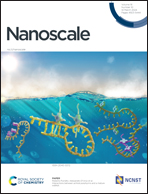Low platinum loading electrocatalyst supported on a carrier derived from carbon dots doped ZIF-67 for the ORR and zinc–air batteries†
Abstract
The development of economical and efficient platinum-based catalysts for the oxygen reduction reaction (ORR) is considered the most promising strategy for the widespread application of clean energy conversion devices. Herein, Co nanoparticles encapsulated in N-doped carbon carriers, CoCN(CDs-X), were constructed by pyrolyzing carbon dots (CDs) doped ZIF-67 and further used to anchor Pt to prepare low Pt loading catalysts, PtCoCN(CDs-X). The introduction of CDs not only improves the conductivity for efficient electron transfer, but also regulates the interaction between Pt and the CoCN(CDs-X) support and alleviates the oxidation of Pt. The optimized PtCoCN(CDs-0.10) displays decent ORR behavior with onset and half-wave potentials of 0.95 V and 0.83 V, respectively, in alkaline media and superior catalytic stability and methanol tolerance. While employing PtCoCN(CDs-0.10) as a cathode catalyst for an as-assembled zinc–air battery (ZAB), it delivers an excellent power density of 194.2 mW cm−2 and exceptional operation stability, which is indicated by a voltage efficiency loss of only 7.7% after a long cycle life of 100 h, demonstrating its great potential applications.



 Please wait while we load your content...
Please wait while we load your content...